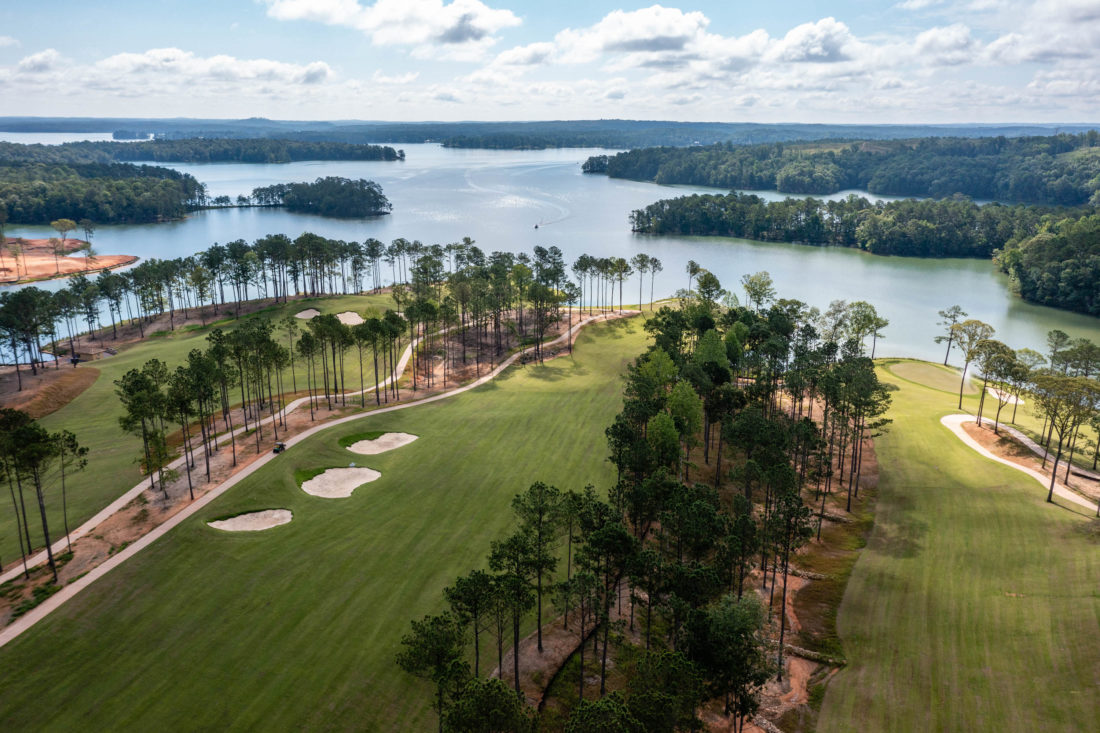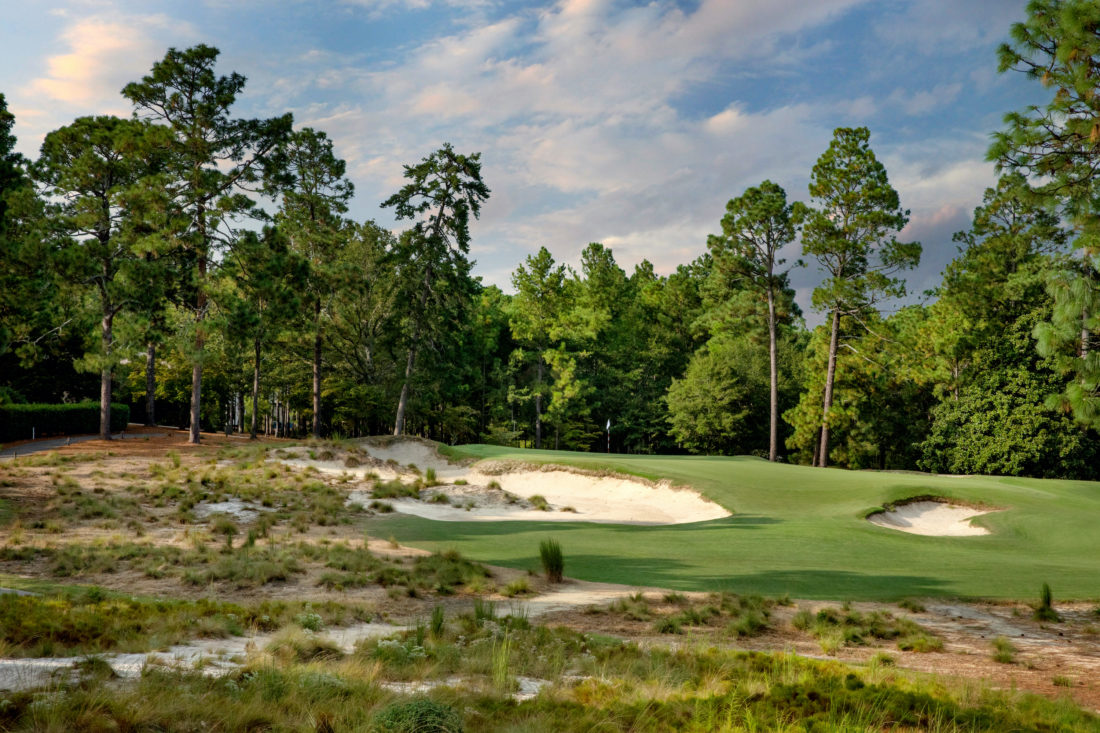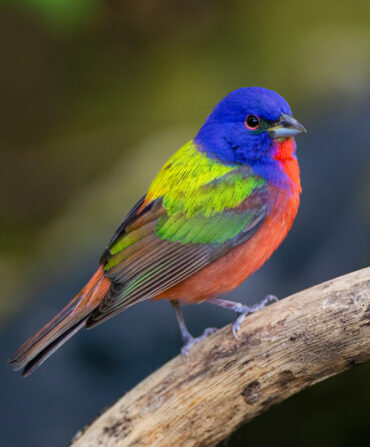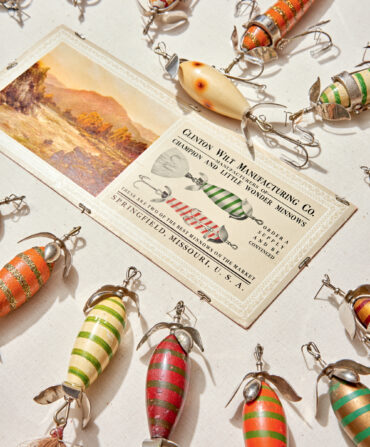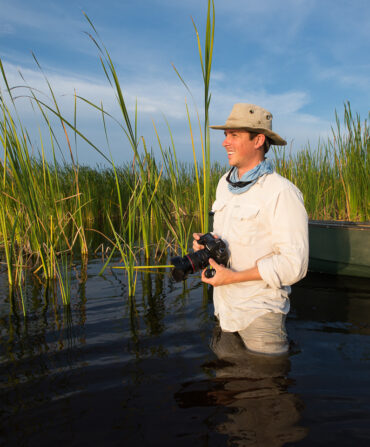Forgive me for being nervous when I teed up my ball on Pinehurst No. 2 for the first time. A mid-handicap golfer, I assumed this Donald Ross masterpiece at the famed North Carolina resort would expose every weakness in my game. And I was right. Even though I’d face an ego smackdown, I wanted to play No. 2 as much to survey the architecture as to try my hand at the impossible-to-read putts. Little did I know, the two men commissioned to renovate this legendary track, Bill Coore and Ben Crenshaw, felt just as anxious when they agreed to take the project on.
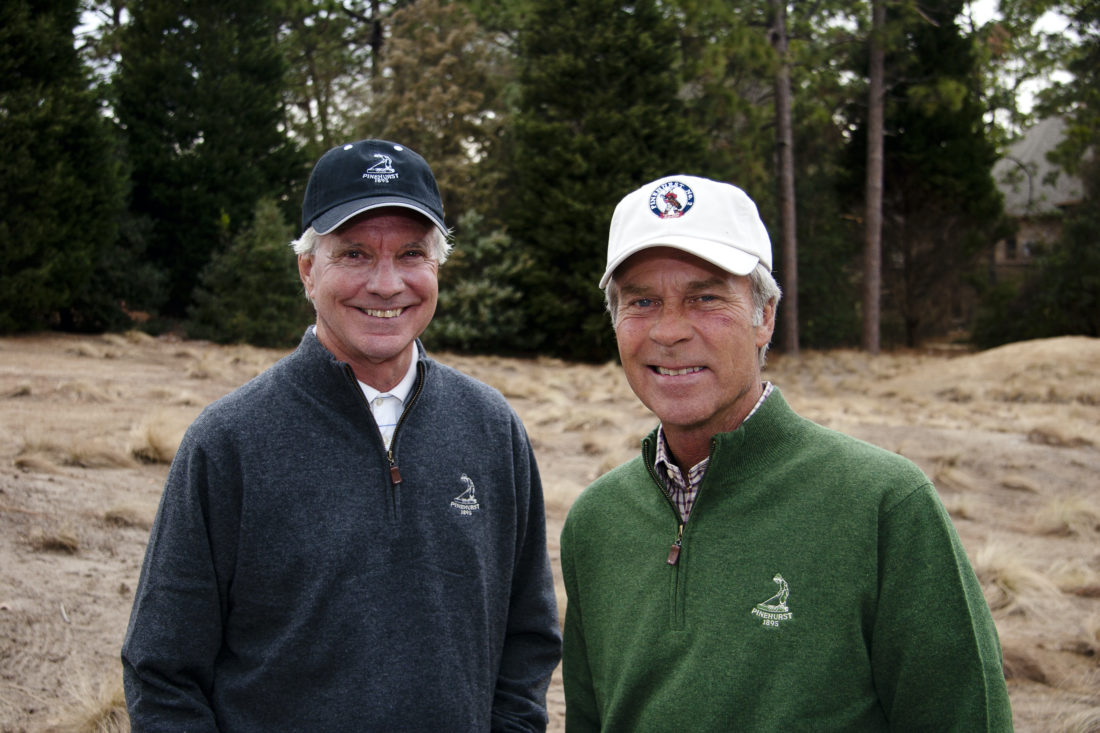
“It was high pressure,” Ben Crenshaw told me later on the phone, “given what Pinehurst means to American golf. Fortunately, the archives are incredible here. We did a deep dive into them to restore the course to its original form.”
Beginning in 2012, Coore and Crenshaw did more than remove the main irrigation system, replace huge swaths of turf with sandy waste areas, and plant more than 20,000 native wiregrass plants. They demonstrated that “allowing the landscape to dictate the design” made for a classic golf experience and also vastly reduced energy resources to maintain the course.
“Bill and I love to work with the land, not as in an attempt to disfigure it but to let the landscape speak for itself,” Crenshaw says. “Pinehurst resides in the North Carolina sandhills, and it should reflect this environment at every turn.”
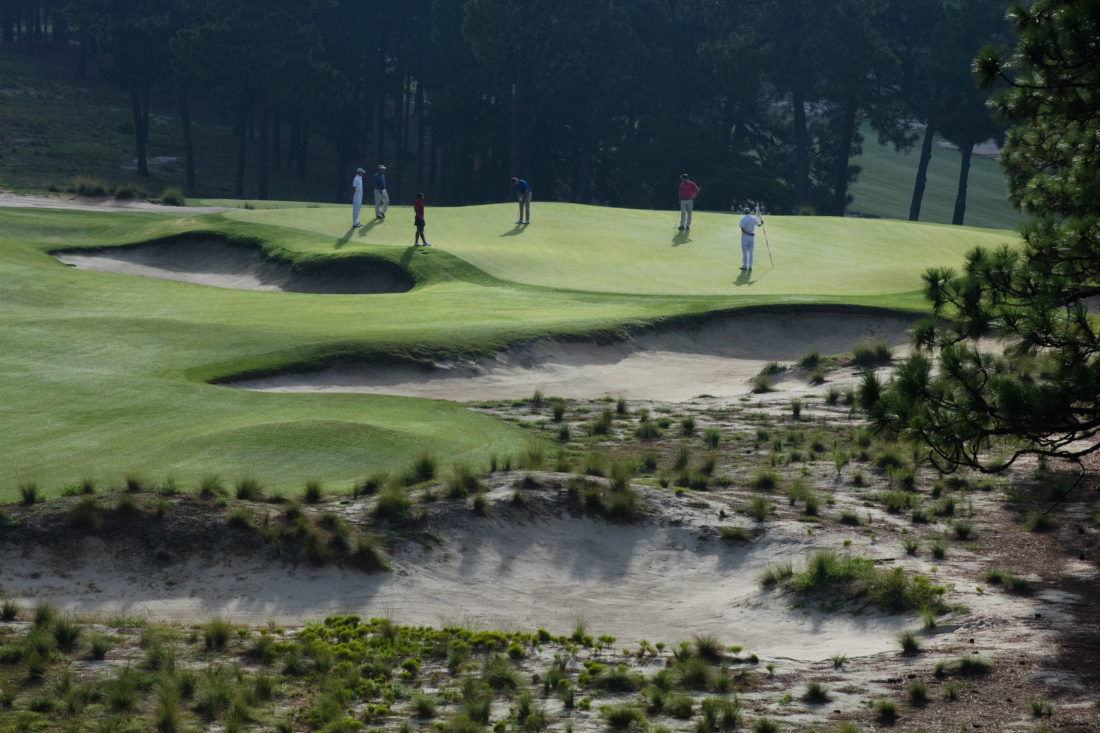
The pair continue to create courses that reflect their environment from New Zealand to Hobe Sound, Florida, where, late this year, they plan to open a much anticipated second eighteen at McArthur Golf Club. They are also designing Streamsong, a short course, in Fort Meade, and construction is slated to begin next year. Whimsical par-three courses are having a moment at premier golf resorts throughout America, and Coore and Crenshaw’s Bandon Preserve in Oregon is widely considered the best of the bunch.
Crenshaw discovered his love of natural golf courses when he was just sixteen years old while playing in the USGA Junior event at The Country Club at Brookline in Massachusetts. “It was a very rustic piece of architecture,” he says. “I was fascinated by the natural mounding and granite outcroppings. There was never a moment when you didn’t know exactly where you were. After Brookline, I devoured golf course books, and I’ve never stopped.”
His design career would have to wait, of course. The World Golf Hall of Fame member won nineteen PGA events including the Masters in 1984 and 1995. He also captained the U.S. Ryder Cup team in the dramatic “Battle of Brookline” in 1999.
In 1985, he teamed up with the golf course architect Bill Coore, a North Carolinian who had worked with Pete Dye for years before starting his own firm. Now, in addition to low environmental impact and sustainable practices, Coore and Crenshaw designs are also known for their playability. Austin’s The Omni Barton Creek Resort & Spa provides a perfect example.
“The easiest thing to do in the world is build a tough golf course,” Crenshaw says. “You should always leave players with a way to get to the green, include a couple of short par fours and a reachable par five. This way every person, regardless of handicap, has a chance to make at least pars, and have fun.”
Coore and Crenshaw’s course descriptions read like natural history guidebooks. Alabama’s new Wicker Point Golf Club will meander through longleaf pines on a peninsula that juts out into Lake Martin. Golfers are encouraged to walk Georgia’s Cuscowilla Golf Club, the better to appreciate the Georgia pines and native grasses. Ditto when strolling the fairways dotted with live oaks and long-needle pines at South Carolina’s Chechessee Creek Club.
“Our goal,” Crenshaw says, “is to let the holes lay upon the land quietly.”
